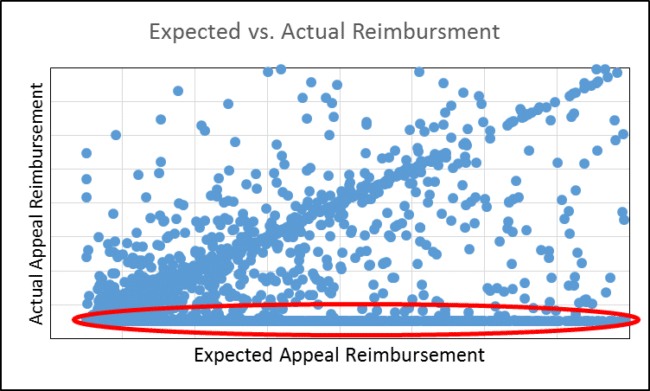Growing up in a family of physicians, I was no stranger to the basic inefficiencies of the healthcare industry. When prompted about how his day had gone, my father, a cardiothoracic surgeon, would predictably respond with an exasperated grunt and apathetic “same as every other day.” Over time, as I noticed this pattern, it became clear that his attitude was merely a symptom of the multitude of headaches that color our healthcare system.
Though our country spends more than any other country in the world on healthcare, the high spending levels have not helped us work out all the kinks. Our challenges in healthcare are not merely consequences of government interaction. The inefficiencies in the industry are multifaceted and scan across every level from unengaged practitioners to insurance providers to complex government mandates. I have shared my perspective on some of the biggest stumbling blocks below and what the trends are in the future.
![]() Poor information sharing between institutions – Possibly the biggest disruption in healthcare today is the adoption of Electronic Health Records. While we’ve taken a step forward in gathering patient information in a clean, seemingly easily accessible way, we’ve taken a step back by creating a multitude of different EHR systems that are incompatible and therefore inefficient in terms of communicating across the healthcare continuum. If a patient is admitted to a hospital for a kidney stone and a nurse inputs PHI into the hospital’s specific EHR system, there is no guarantee that the information will transfer smoothly into a nephrologist’s customized EHR system working at an outpatient private practice clinic. On top of systems that don’t talk, we have frustrated physicians who feel they are wasting large amounts of time inputting patient data into computers (and it doesn’t help that my dad still types with one finger). In an era where everything is moving online, it’s imperative that we remedy this digital dilemma to avoid further industry-wide setbacks. While it has taken the banking industry 30 years to move into the digital space, healthcare is only five years into the journey with the Accountable Care Act. The good news is that the Nashville-based Center for Medical Interoperability has taken on this challenge; for more details, visit http://medicalinteroperability.org/.
Poor information sharing between institutions – Possibly the biggest disruption in healthcare today is the adoption of Electronic Health Records. While we’ve taken a step forward in gathering patient information in a clean, seemingly easily accessible way, we’ve taken a step back by creating a multitude of different EHR systems that are incompatible and therefore inefficient in terms of communicating across the healthcare continuum. If a patient is admitted to a hospital for a kidney stone and a nurse inputs PHI into the hospital’s specific EHR system, there is no guarantee that the information will transfer smoothly into a nephrologist’s customized EHR system working at an outpatient private practice clinic. On top of systems that don’t talk, we have frustrated physicians who feel they are wasting large amounts of time inputting patient data into computers (and it doesn’t help that my dad still types with one finger). In an era where everything is moving online, it’s imperative that we remedy this digital dilemma to avoid further industry-wide setbacks. While it has taken the banking industry 30 years to move into the digital space, healthcare is only five years into the journey with the Accountable Care Act. The good news is that the Nashville-based Center for Medical Interoperability has taken on this challenge; for more details, visit http://medicalinteroperability.org/.
![]() Poor physician/patient relations – As government mandates and incentive structures motivate the industry to move toward a system that places the patient in the driver’s seat of care, we must also consider how current standards promote the opposite. We’re seeing a need for doctors to move toward more of a consultative role, rather than an authoritative one, as we move toward value-based care. However, patients are being seen on average for less than two minutes. Two minutes is not nearly enough time for a doctor to intake the patient’s complaints, make a prognosis, and then consult with the patient about potential options to moving forward. As we move away from fee-for-service, we’ll see doctors and patients acting as partners in care delivery, spending more meaningful time together rather than the doctor hastily filling out a prescription.
Poor physician/patient relations – As government mandates and incentive structures motivate the industry to move toward a system that places the patient in the driver’s seat of care, we must also consider how current standards promote the opposite. We’re seeing a need for doctors to move toward more of a consultative role, rather than an authoritative one, as we move toward value-based care. However, patients are being seen on average for less than two minutes. Two minutes is not nearly enough time for a doctor to intake the patient’s complaints, make a prognosis, and then consult with the patient about potential options to moving forward. As we move away from fee-for-service, we’ll see doctors and patients acting as partners in care delivery, spending more meaningful time together rather than the doctor hastily filling out a prescription.
Gap in operations – One of the most important factors in an operating room is communication: what type of anesthesia is the patient receiving? What is his blood pressure? What is his heart rate? Unfortunately, this same effort to communicate in an operating room setting does not translate to the rest of the industry. Simple gaps in the clinical care communication amongst a team can cause operational inefficiencies, slowing down the time it takes to discharge the patient. Because of the complicated regulatory structure, it takes a substantial amount of time to get through room protocols, standing orders, and things of the like. Without greater communication across the care continuum and a lack of a sense of urgency, patient turnover will remain inefficient.
While our healthcare system has improved immensely over the past several decades, there will always be room for improvement. Increases in the use of technology coupled with greater levels of communication will provide a platform for us to move past the inefficiencies that plague the system.




